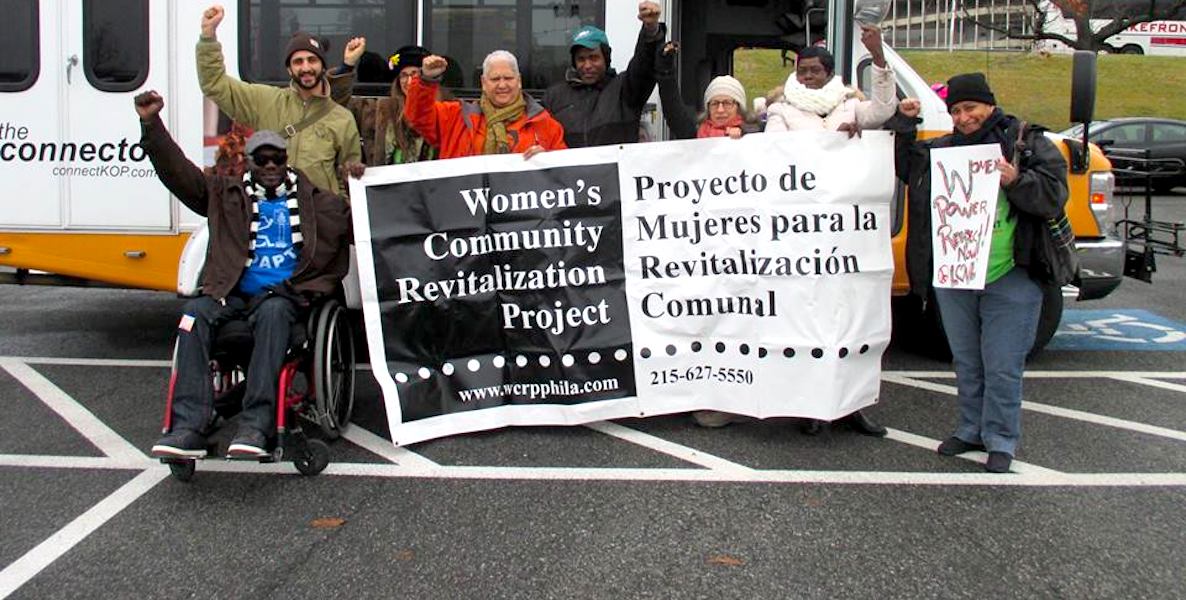It’s a good thing Stacey Trooskin can tune out naysayers.
In the late 90s, while earning a master’s degree at Yale, someone tried to discourage Trooskin from pursuing Hepatitis C research. Don’t make a career in Hepatitis C, because it’s a disease of the poor and underserved. Nobody’s ever going to put money into finding a cure.
“I don’t know who told me that, but they couldn’t have been more wrong,” Trooskin says one summer morning from her office at the Center City headquarters of Philadelphia FIGHT, the nonprofit that provides primary care and HIV services to low-income patients. “What I’ve seen is really what I think is the greatest public health accomplishment of our generation: We can cure a virus.”
We believe Philadelphia can be the first city to eliminate Hep C—I believe that to my core. We need to be voting, we need to be asking our local government officials to provide resources.
As Hepatitis C treatment has evolved—today, patients can be cured in as little as eight weeks—Trooskin has been instrumental in seeing to it that any Philadelphian who needs the life-changing regimen gets it: She’s tirelessly—and successfully—advocated to knock down legal, policy, and financial barriers that previously kept treatment from reaching vulnerable populations like the poor; incarcerated persons; and those struggling with drug or alcohol addiction, and she’s been at the forefront of grassroots efforts to bring testing and treatment into underserved communities, reaching patients where they are.
![]()
As Trooskin reminds us, the Hepatitis C Virus (HCV) kills more people every year than all of the 60 most common infectious diseases combined. To date, her team has tested over 3,300 individuals for HCV in the community, and has supported over 2,600 tests conducted by Philadelphia prisons; through her work, nearly 2,000 individuals who are chronically infected have been diagnosed, and nearly 1,000 have been linked to care.
Now, Trooskin, who after college served in AmeriCorps’ Rapid Response Corp before pursuing a masters, MD, and PhD in infectious disease, believes our city can be the first to eradicate the virus altogether.
“We can’t fix that many things as providers in medicine right now. We try to take care of patients the best we can. We manage chronic health conditions like hypertension and diabetes. But to be able to actually fix a problem as an internist is really an extraordinary feeling,” she says.
Here, the New Jersey native, who’s called Philly home for most of the last 26 years, shares what everyone needs to know about the most common bloodborne virus in the U.S., and how we can all do our part to make it an affliction of the past.
Jessica Press: Before we talk about cures, can you share a quick overview of what Hepatitis C actually is, and the toll it takes on the body?
ST: What I always tell my patients is that Hepatitis C is a virus that can impact the liver. And over time, it can cause scarring to the liver. A little bit of scarring is called fibrosis, and a lot of scarring is called cirrhosis. Not everyone with Hepatitis C will get cirrhosis of the liver, but we don’t know who will and who won’t, and once you develop cirrhosis of the liver you’re at a greater risk for liver cancer and liver failure. The good news is that it’s totally curable now. And so the earlier we identify and treat Hepatitis C, we can prevent any of these negative outcomes from happening and prevent transmission to others.
JP: On that note, how is it transmitted, and who’s most at-risk of contracting it?
![]()
ST: It’s usually transmitted by blood, and so anyone who had a blood transfusion before 1992, which is when the blood was able to be screened for Hepatitis C, is at risk. Being born between 1945 and 1965 is a risk factor. And now, in the setting of the opioid epidemic, injection drug use [is a risk factor]; not only syringes, but any sort of tool used to inject drugs, including water that people use to fix a hit, cookers, cotton, even if you use all of your own things but share a cooker with somebody and separately dip into the same area, it can be contaminated. And so the opioid epidemic has really introduced Hepatitis C to a new generation, and we know that within one year of injecting drugs, 30 percent of people will become exposed. The opioid epidemic is really a game-changer.
JP: Let’s talk about the work you’re doing, on top of seeing patients at Penn, to get treatment to those who need it.
ST: I oversee two different programs. One is at Philadelphia FIGHT, where Executive Director Jane Shull and program manager Lora Magaldi have always offered unwavering support, called C a Difference. We’ve partnered with recovery centers around the city—drug treatment programs, both in-patient and outpatient programs like methadone programs and suboxone programs, inpatient detox and recovery programs—and we aim to pick up where they’ve left off. So we can do antibody testing and [the necessary] confirmatory testing, link patients to care, do lab work, get meds started, and see someone through to cure. We do as much as we can to make it patient-centered.
The other is called C Change, which works directly with the syringe exchange program, Prevention Point, and other state-designated centers of excellence, to try to test and link as many people to care as possible. It’s a collaborative program with the Department of Public Health, led by Hannah Zellman, MSW, with the support of Danica Kuncio, MPH, a Viral Hepatitis Epidemiologist there.
JP: Do you have a mobile medical unit, or how are you reaching people?
![]()
ST: We have outreach staff who are amazing—I have the best folks working with me in this field. And they go out into the community, they provide education, they do testing. And then they work to link folks to care. We will escort people to the clinic. We have added what we call a resource schedule which allows people within a week of diagnosis to come in and see a provider. We have a mobile fibroscan, which is a noninvasive way—almost like an ultrasound—to measure how much scarring is in the liver. We have an onsite lab in our clinic at the John Bell Health Center, so it’s a one-stop shop. We have benefits coordinators, we make sure that patients have transportation, we’ll have a hot meal for them if they are hungry. If someone misses an appointment, we find them—we dispatch our community workers into the field with their meds, or if they’re due for a bloodraw we’ll do as much as we can. We basically are trying to overcome barriers to getting folks in care.
JP: Given that prisons also address addiction, do you work with our incarcerated population?
ST: We do. That’s the other piece of what we do here at FIGHT. We work really closely with the Philadelphia Department of Prisons, again, meeting the prison wherever they are out of our Institute for Community Justice. They go into the jails and they’ll meet with every single person who’s Hepatitis C positive, and they will give them information about how to link to care upon release if they’re not going to be treated while they’re there. But if someone is going to be there for the duration of treatment, which is now just 8 to 12 weeks, they should be treated; that should be the standard of care. The holy grail would be to test every single individual on intake, just like they do for HIV, tuberculosis, syphilis.
JP: Is the medicine still as exorbitantly expensive as it was reported to be when it first came out?
ST: When the first iteration came out, it was priced very high, and it got a ton of press as “The $1,000 pill!” Unfortunately it was around 84 days of therapy, which meant about $84,000 for a treatment course. It’s important to note that that’s never really what payers [insurers] paid, because there’s discounts and negotiated rebates and all of this. But anyway, that’s what it looked like. And given the fact that this is the most common bloodborne infection in the U.S. and there are millions of people [suffering], the price tag overall was hefty.
Early on, even with those very high prices, Medicare was largely covering it, the VA was largely covering it, because it was shown to be cost-effective: If you cured somebody, you could prevent all the downstream effects—transplants, new cases of infection, dealing with the high hospitalization cost of end-stage liver disease. But it was still a big bite for people to take, budget-wise. And so when these drugs first came out, the approach that many payers took, including most Medicaid programs [which are run at the state level] was to ration the medication. They set up three different prior-authorization criteria. One was disease severity—so payers would say ‘We’re only giving this medicine to the sickest patients.’ Which makes no sense, because we know that if we give it early, we can prevent scarring from happening.
JP: That sounds so cruel.
ST: So essentially, as a provider that meant saying, ‘I’m sorry, your liver isn’t sick enough. We’re going to have to wait and watch your liver get sicker before I can give you this treatment.’ And there is a point at which someone becomes at greater risk for developing liver cancer and even a cure won’t remediate that.
JP: So in essence you’d be daming them to suffering?
![]()
ST: Or at least to screening every six months, for the rest of their lives for liver cancer, and all of the stress and logistics and cost that’s associated with that. The second prior authorization criteria that was put into place was the sobriety requirement.
JP: Meaning you had to be drug- and alcohol-free for a certain amount of time?
ST: Correct. And there is no other medication that has required somebody to be sober from drugs and alcohol. We don’t tell people with end-stage lung cancer that they need to stop smoking before they get the fifth salvage regimen that they’re on, which also costs hundreds of thousands of dollars. And it completely stigmatizes the fact that substance abuse disorder is a chronic medical condition, like asthma or hypertension. You can treat it, but you can’t cure it and get rid of it forever. And then the third thing was that some payers required the prescriber of these medications to be a sub-specialist, like an infectious disease provider or hepatologist or gastroenterologist.
JP: What are the implications of that?
ST: Well, imagine if you live in Appalachia, and you’re in the middle of an opioid epidemic, and all you have are primary care providers around you and it’s 250 miles to the biggest tertiary care center—you do not have access to treatment.
JP: And now—are any of those requirements still in place?
ST: In the state of Pennsylvania, none of those requirements are in place. Now, the American Association for the Study of Liver Disease (AASLD) guidelines, and I sit on that committee, explicitly state that everybody should be treated, irrespective of disease stage. In fact, the earlier, the better.
JP: Where does pricing stand?
ST: As more pharmaceutical companies developed competitor drugs and came to market, pricing has drastically come down. Now, the list price is somewhere between $23,000 and $24,000. What payers are actually paying is shrouded in secrecy and backdoor negotiations, but we think it’s somewhere around $7,000.
We have zero public health infrastructure, with the exception of what we built through HepCAP and what the Department of Health has fought to get to build our surveillance program. We need funding allocated through our city government, through state government.
JP: It sounds like, in this arena, Philly is actually pretty progressive.
ST: I think so. I’m very proud that Philadelphia has continuously been a leader in access to care around Hep C, and I think we are in excellent company—New York, San Francisco, and Philadelphia are nationally recognized as being at the cutting-edge of access to care and innovative programming. We were one of the first states to open up access in our Medicaid program. One of the first states to do right by our incarcerated brothers and sisters. But that came from advocacy—that didn’t happen by inertia. One of the things that I’m most proud of in my career is our ability to change policy at the state level, because it has impacted the public’s health and given access to so many people to have these life-saving therapies.
JP: How can those of us who aren’t in the medical field help support this kind of advocacy?
ST: Join HepCAP! The Hepatitis C Allies of Philadelphia is a community coalition of which I’m the community co-chair. It was founded by Alex Shirreffs, MPH, Founder of HepCAP, who’s also the former Viral Hepatitis Prevention Coordinator at the Philadelphia Department of Public Health, and it’s been in place for about eight years and has really been at the forefront of moving those policy pieces through advocacy and activism.
JP: If you had a megaphone to all of Philadelphia, what would you want to make sure they know?
ST: Getting tested for Hepatitis C is easy, it’s simple, and everybody should know their status because it is a fixable problem. So we need to destigmatize it; it should be no different than asthma, hypertension, diabetes—except for the fact that it can be cured.
And we believe Philadelphia can be the first city to eliminate Hep C—I believe that to my core. We need to be voting, we need to be asking our local government officials to provide resources. Right now we have public health infrastructure for HIV, tuberculosis treatment, STI clinics. But we have zero public health infrastructure [for Hep C], with the exception of what we built through HepCAP and what the Department of Health has fought to get to build our surveillance program. We need funding allocated through our city government, through state government.
JP: If some gajillionaire came along and wanted to invest and endow programming to end HCV, what kind of investment would the city need—what do those numbers actually look like?
ST: For C Change to continue and to grow we would need close to $1.75 million a year to make that happen.
JP: It’s amazing that you’ve been able to do as much as you have without that kind of funding. But it would be even more incredible for the city to rally around you to make this happen. Hear that, Philly funders?
Photo via Stacey Trooskin






